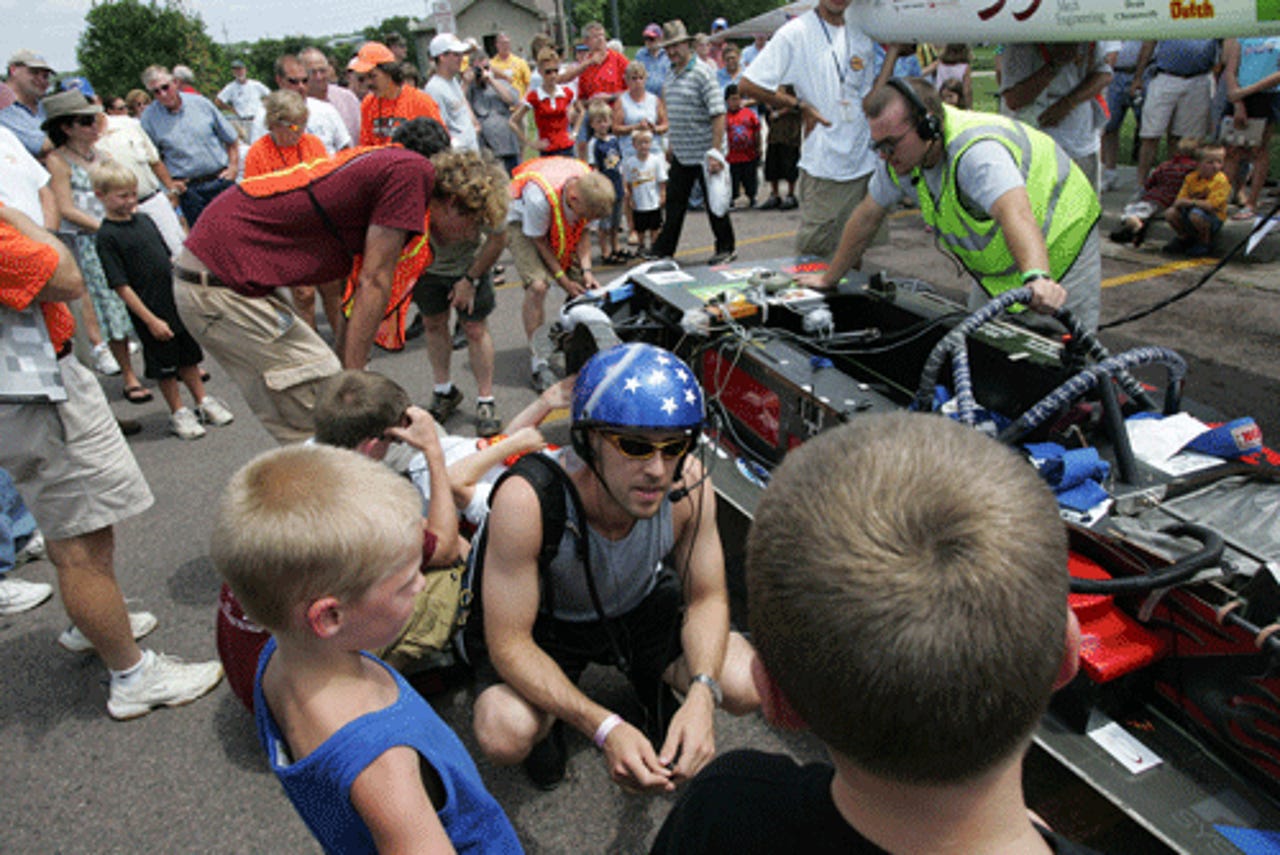Photos: Solar 'raycing' stuck in the clouds

Stuck in clouds and rain
Here, the University of Michigan team loses its lead near Burlington, Kan., after heavy rains and clouds force team members to stop and recharge their car's batteries.
MIT
The team from MIT took the lead by driving slower and conserving energy as the clouds and rain darkened the sky. The team is currently in third place after 1,633 miles. Cars are tracked by wireless GPS devices. Their progress can be followed on the solar raycing site.
Crossing the border
Raycers crossed the Canadian border on Thursday--and were subject to the same border check endured by drivers of conventional vehicles. Driver Huy Le of the University of Waterloo is questioned by Canadian Border Service Officer Lauren Lange. The route runs through Canada for the first time, further spreading the news about solar energy's potential.

Spreading the word
University of Minnesota driver John Wanner tells an audience in Falls Park, S.D., about the technology used in his solar car. His team is the current leader in the open division as it heads into the final stretch. The open division allows teams to use batteries of their choice. Its counterpart, the stock division, uses lead-acid batteries and solar cells approved by the NASC.
Pit stop on the go
Students from the University of Kansas work on their car in Weatherford, Tex., early in the race. The U.S. Department of Energy, the main sponsor of this biannual event, seeks to bolster national security by promoting renewable energy sources and energy-efficient technologies.
Recharging for the next day
The defending champions, from the University of Missouri-Rolla, prepare to camp out in the Wal-Mart parking lot.
Cruising
Click here for previous coverage of the North American Solar Challenge.